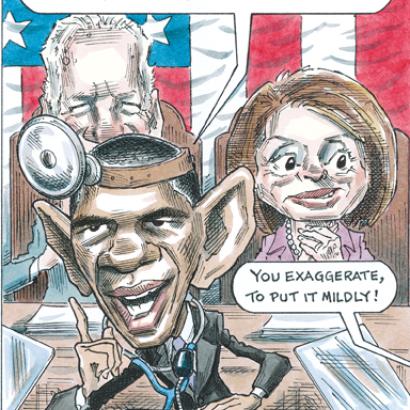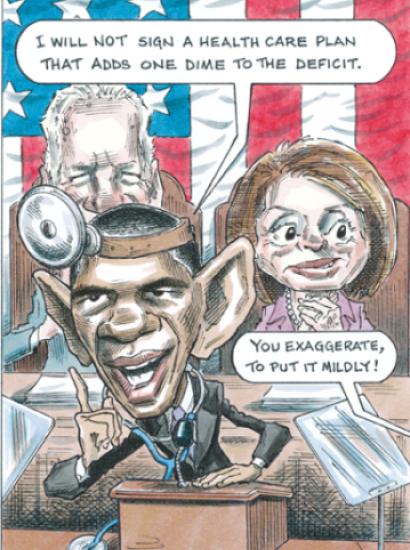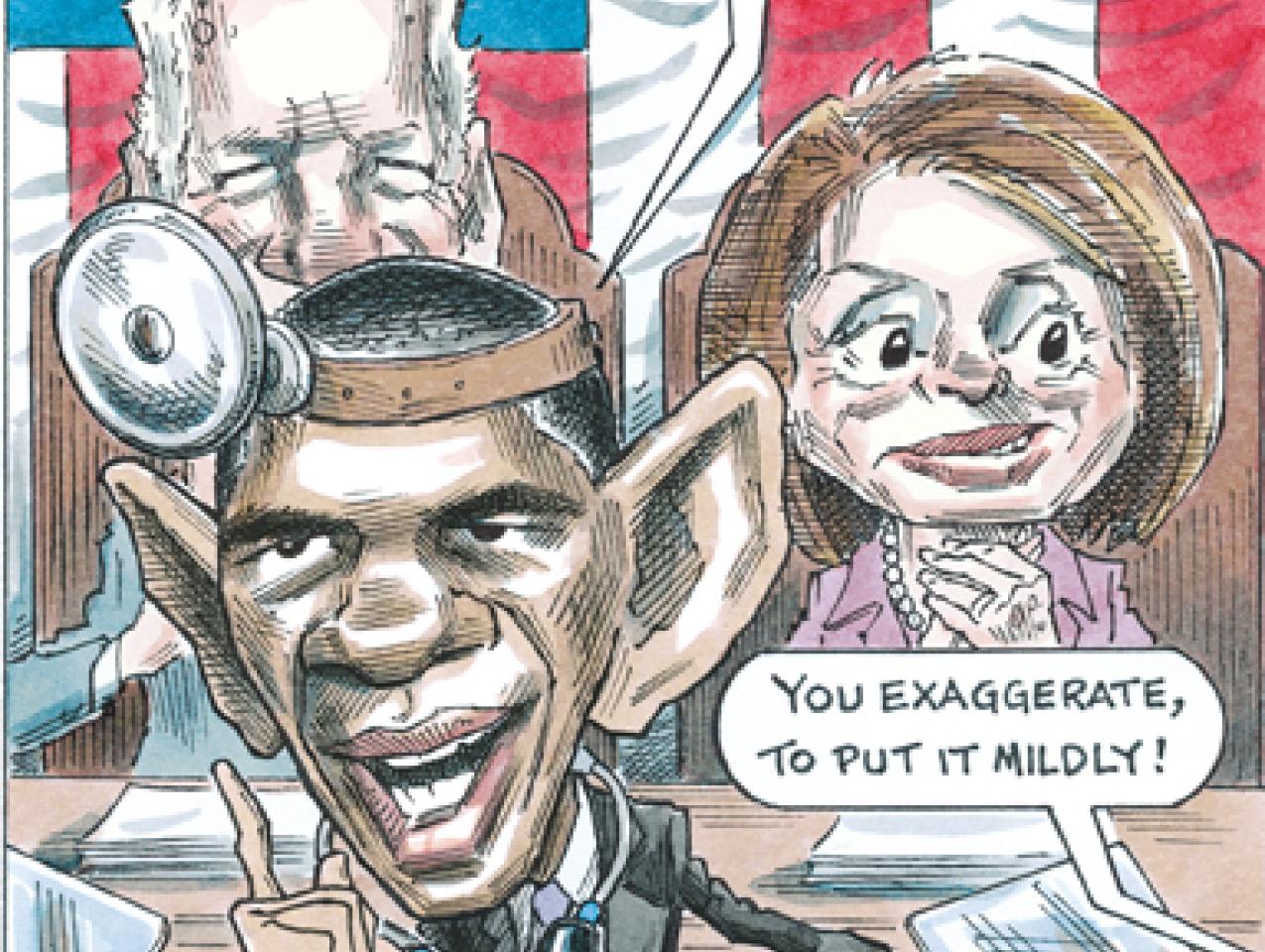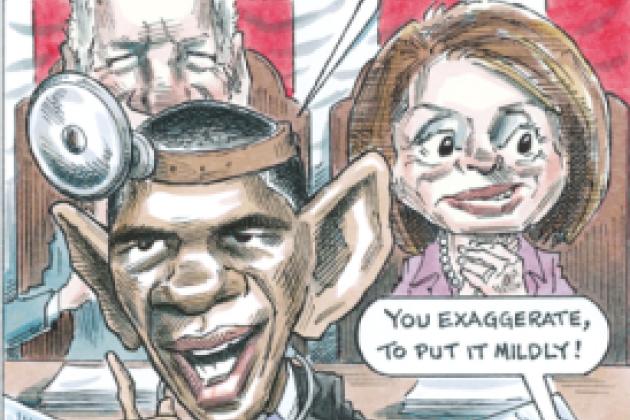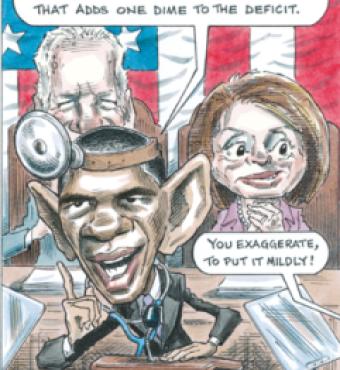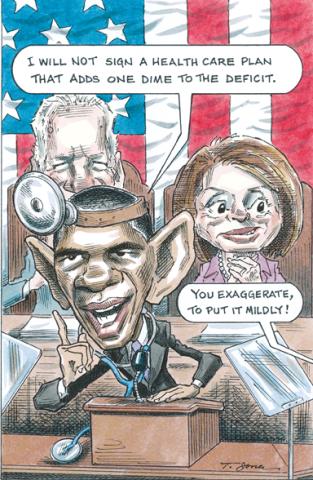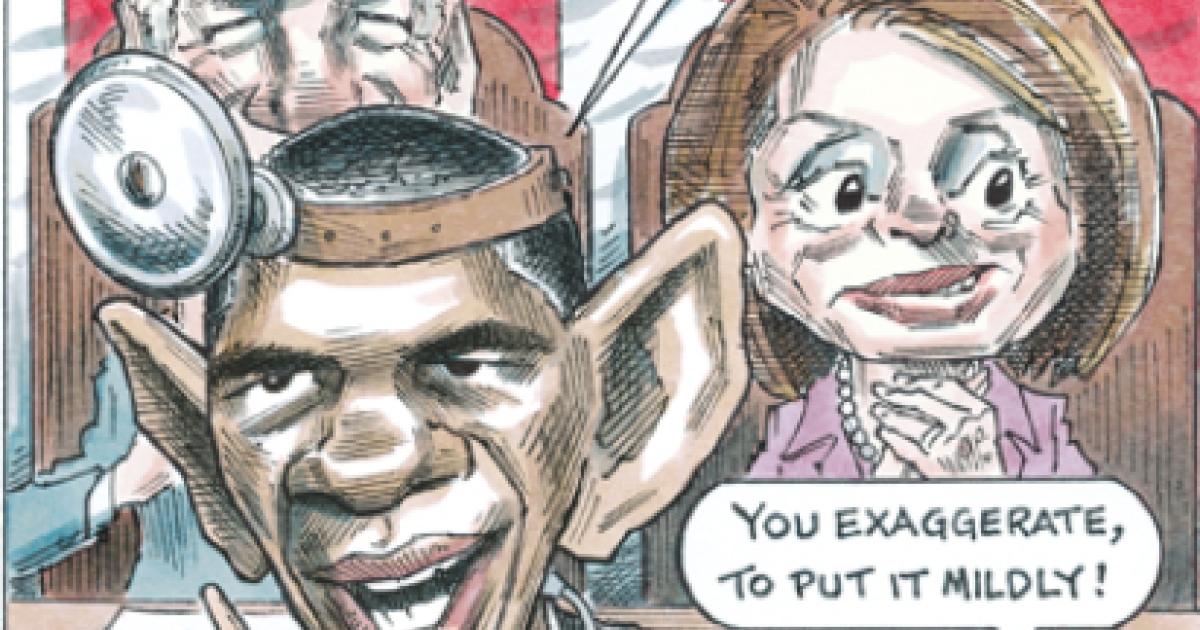- Budget & Spending
- Law & Policy
- Regulation & Property Rights
- Politics, Institutions, and Public Opinion
- Campaigns & Elections
- The Presidency
- Congress
- Health Care
- Economics
“What this plan will do is make the insurance you have work better for you. . . . And here’s what you need to know: I will not sign a plan that adds one dime to our deficits—either now or in the future. Period.”
So spoke President Barack Obama in his August address to Congress, for the first time laying out specific goals for health care reform. To try to persuade the American people to support his health reform agenda, the president made two simple promises: first, his plan would benefit everyone who already had health insurance; second, his plan would not add to the nation’s yawning budget deficit. Both claims were essentially false; examining them offers economic lessons for reform.
The administration’s plan would impose mandates to ensure that employers provide coverage for their employees, to ensure that individuals obtain coverage, and to ensure the form this coverage must take. Those mandates would remove the freedom to choose one’s health insurance plan because the government, in its effort to correct perceived inequities, would dictate which health care services must be covered and which health care providers must be used.
The proposed unprecedented intrusion of government into private markets would have adverse effects on people with insurance in both the short and the long run.
The mandates would lead to large increases in the cost of health insurance for everyone. Research studies have shown that as people become insured, especially under a health plan that offers broad coverage and low copayments, they consume more health care services. The best estimates indicate that each newly insured person approximately doubles his or her health spending.
With 30 million to 40 million newly insured people under the administration’s plan, aggregate health care demand would increase significantly. But when demand expands, prices increase. We estimate that the higher demand would increase health insurance premiums for the typical family plan by about 10 percent. Because an employer-sponsored family insurance plan cost $12,680 in 2008, this would translate into an increase of about $1,200 in the typical annual premium.
The mandates would also have adverse additional longer-run consequences. According to provisions in both House and Senate bills, mandated plans must have low copayments and provide coverage of health care services that is at least equal in scope to a typical, current employer-sponsored plan. But those are the very flaws responsible for high and rising health care costs, flaws that stem directly from the misguided tax exclusion for and the extensive state regulation of health insurance. By locking in those flaws, the mandates would inhibit precisely the innovation needed to reform U.S. health care. Ultimately, as government seeks to rein in costs, it will curtail access to health care services by erecting barriers between patient and health care provider.
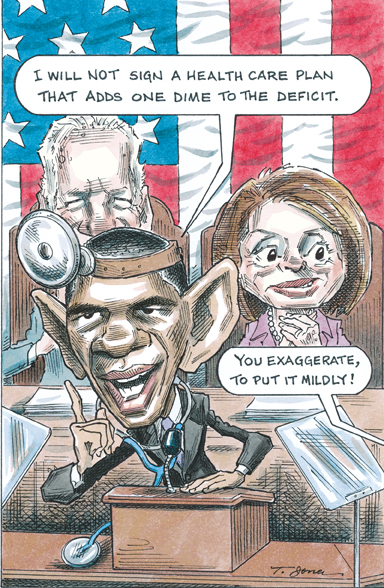
The current House and Senate bills would also break the president’s second promise: not to add to the deficit. In part because the health insurance that the administration’s plan would force people to buy is expensive, the plan proposes to give individuals large financial subsidies to offset the cost, at least partially. The entitlement-based subsidy, combined with the proposed Medicaid expansion, would add between $700 billon and $1.2 trillion to federal spending over the next decade, according to the Congressional Budget Office. The new entitlements would come on top of existing federal health care entitlements that the government has been able to neither control nor finance.
A portion of the additional spending would be financed by savings from the existing federal health care programs. But, thus far, the alleged savings would come mainly from cutting future Medicare payment rates. If history is any guide, the savings won’t materialize.
For the past twenty-five years, Congress has repeatedly “cut” payment rates, yet Medicare’s expenditures have continued to outstrip its dedicated revenues. New taxes have been required, but revenues still can’t keep up with expenses. Recall that in the early 1990s Congress removed the cap on Medicare’s taxable wage base. Today, the Medicare board of trustees projects that the Hospital Insurance Trust Fund will be bankrupt in eight years.
More important, cutting payment rates is not reform. Ultimately, such price controls would lower the quality of health care and reduce the supply of health services, just as price controls have cut quality and supply in every market in which they have been tried. Congress’s near-exclusive reliance on such cuts is a clear demonstration that the federal government has no idea how to reform its current insolvent health care programs, much less how to properly design a new one.
Reform will be partly financed by higher taxes. The House bill proposes to raise the highest personal income tax rate by 5.4 percentage points on top of the Obama administration’s plan to raise the top rate by an additional 4.6 percentage points next year. The combined 10-point increase raises the top income tax rate to 45 percent—an economic growth-destroying level not seen since the early 1980s. Senator Max Baucus proposes, instead, to tax some health insurance premiums.
In neither bill do higher taxes finance the proposed additional spending. Should the Medicare savings fail to materialize, as we believe they will, the spending in either bill will add more than $100 billion per year in perpetuity to the already soaring national debt.
Returning to President Obama’s address: “We did not come to fear the future. We came here to shape it.” But shaping needs a plan that is well thought out. To move forward, the country must have two separate debates. The first should center on how to improve current health insurance arrangements to rein in the epidemic of health spending that too often fails to provide good value for money.
The second debate should center on additional steps to improve access to health care for those who cannot afford it. This debate, however, must be separated from the issue of insurance coverage. Many currently insured Americans no doubt would be willing to pay some additional amount if extending health insurance coverage could improve the health of the uninsured.
The hard reality is that there exists little evidence that it does. Helen Levy and David Meltzer, in a 2008 review of research in the Annual Review of Public Health, summarize the overwhelming conclusion of academic research: “The central question of how health insurance affects health, for whom it matters, and how much, remains largely unanswered at the level of detail needed to inform policy decisions.” We must experiment with alternatives, such as further expansions of community health clinics, special assistance for the chronically ill, and other programs that might not supply traditional services but could have a big impact on people’s health.
Comprehensive, low-deductible, low-copayment insurance has brought us to where we are today. The administration’s plan to expand and lock in this flawed paradigm will ultimately defeat the goal of making health services more affordable for everyone. Fortunately, there are other options, including policies that encourage more cost-conscious health care choices, greater competition among health insurers, and reduced practice of defensive medicine.
President Obama claims to support these ideas, but the plan he outlined is not consistent with these claims and neither is the Senate Finance Committee bill. The American people should demand a second opinion.








